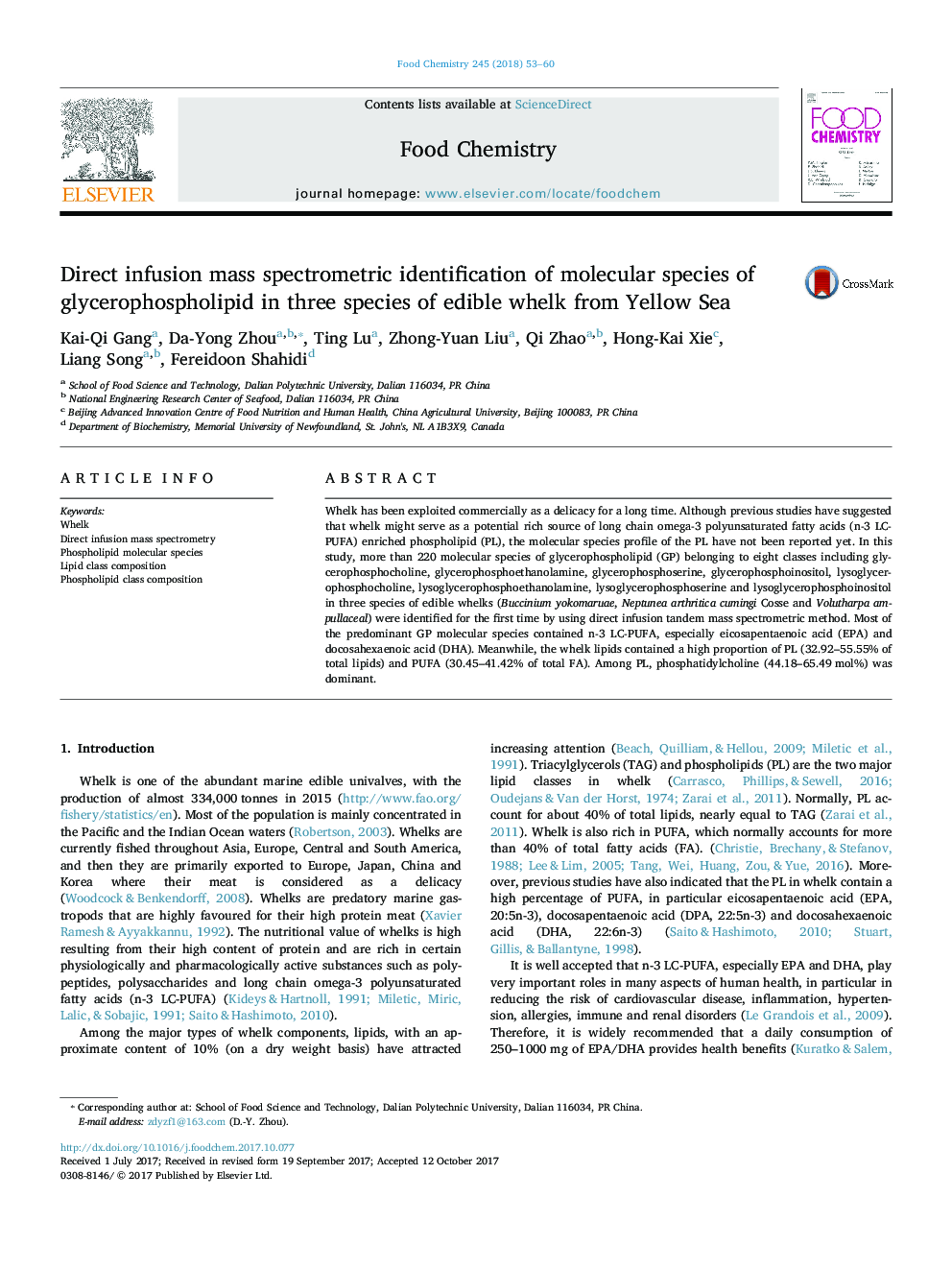| Article ID | Journal | Published Year | Pages | File Type |
|---|---|---|---|---|
| 7586210 | Food Chemistry | 2018 | 8 Pages |
Abstract
Whelk has been exploited commercially as a delicacy for a long time. Although previous studies have suggested that whelk might serve as a potential rich source of long chain omega-3 polyunsaturated fatty acids (n-3 LC-PUFA) enriched phospholipid (PL), the molecular species profile of the PL have not been reported yet. In this study, more than 220 molecular species of glycerophospholipid (GP) belonging to eight classes including glycerophosphocholine, glycerophosphoethanolamine, glycerophosphoserine, glycerophosphoinositol, lysoglycerophosphocholine, lysoglycerophosphoethanolamine, lysoglycerophosphoserine and lysoglycerophosphoinositol in three species of edible whelks (Buccinium yokomaruae, Neptunea arthritica cumingi Cosse and Volutharpa ampullaceal) were identified for the first time by using direct infusion tandem mass spectrometric method. Most of the predominant GP molecular species contained n-3 LC-PUFA, especially eicosapentaenoic acid (EPA) and docosahexaenoic acid (DHA). Meanwhile, the whelk lipids contained a high proportion of PL (32.92-55.55% of total lipids) and PUFA (30.45-41.42% of total FA). Among PL, phosphatidylcholine (44.18-65.49Â mol%) was dominant.
Keywords
Related Topics
Physical Sciences and Engineering
Chemistry
Analytical Chemistry
Authors
Kai-Qi Gang, Da-Yong Zhou, Ting Lu, Zhong-Yuan Liu, Qi Zhao, Hong-Kai Xie, Liang Song, Fereidoon Shahidi,
